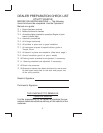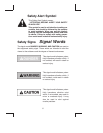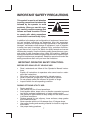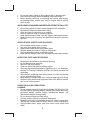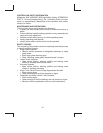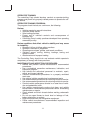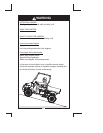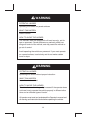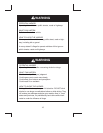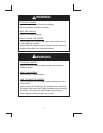
OPERATOR TRAINING:
The controlling Party should develop, conduct an operator-training
program and permit only properly trained persons to operate the util-
ity vehicle.
OPERATOR-TRAINING PROGRAM:
The program should include, as a minimum, the following:
Review:
• Vehicle operator’s manual instructions.
• Vehicle’s safety decals.
• Safe loading practices.
• Proper use of vehicle’s controls and consequences of
improper use.
• Controlling Party’s safety practices developed from operating
area safety survey.
Review conditions that affect vehicle’s stability and may cause
its instability:
• Operator’s failure to follow safety practices.
• Operator’s exercise of judgement.
• Operating area slopes, grades, and terrain conditions.
• Vehicle’s speed, turning, braking, loadings, towing and
dynamic forces.
• Attachments and improper loading.
The Controlling Party should train and evaluate vehicle operator’s
competency to comply with these practices.
MAINTENANCE AND INSPECTION PROCEDURES:
• Review and perform vehicle manufacturer’s recommended
procedures.
• Use a scheduled preventive maintenance, lubrication, and
inspection program.
• Use trained and authorized personnel to maintain, repair,
adjust, and inspect vehicles
• Conduct recommended procedures in a properly ventilated
work area.
• Use original vehicle manufacturer’s replacement parts.
• Use recommended procedures for returning vehicle to service.
• Use recommended procedures for returning vehicle to service.
• Conduct vehicle performance checks in an area free of vehic-
ular and pedestrian traffic.
• Use vehicle manufacturer’s engine shut down and vehicle
immobilization recommended procedures before undertaking
maintenance or repairs.
• Chock wheels and block chassis before working underneath
vehicle.
• Do not use open flames to check level or leakage of fuel,
battery electrolyte, or coolant.
• Equip work area with fire extinguisher equipment.
• Follow vehicle manufacturer’s recommended inspection and
maintenance procedures.
11





